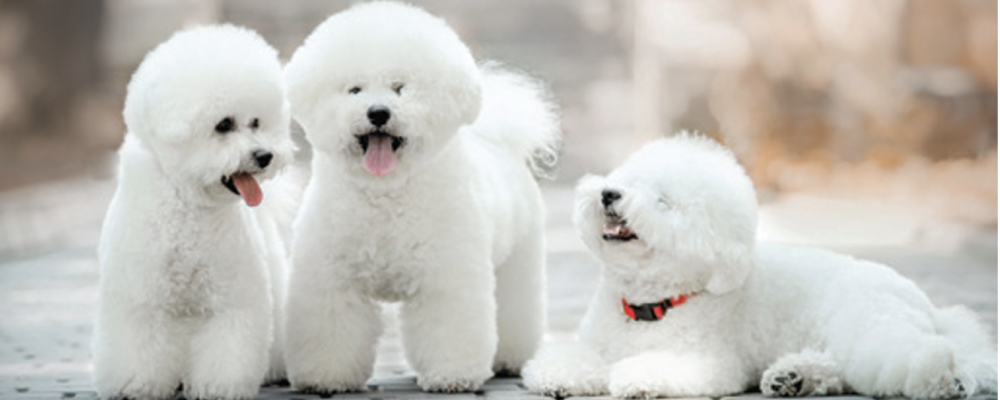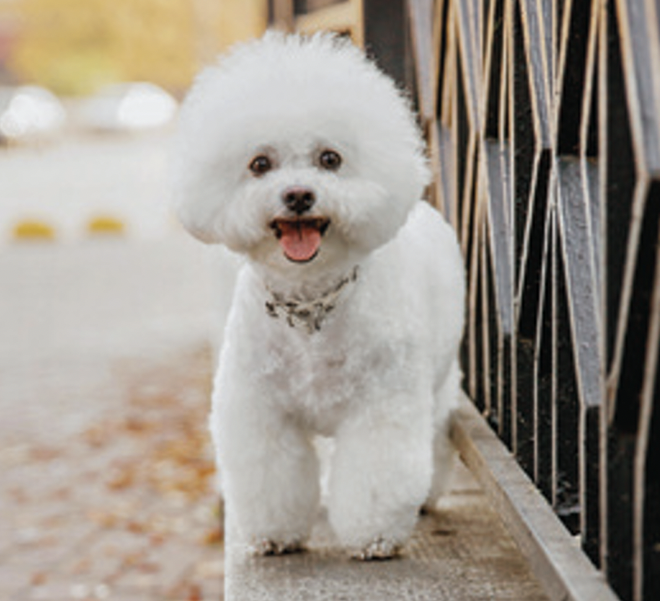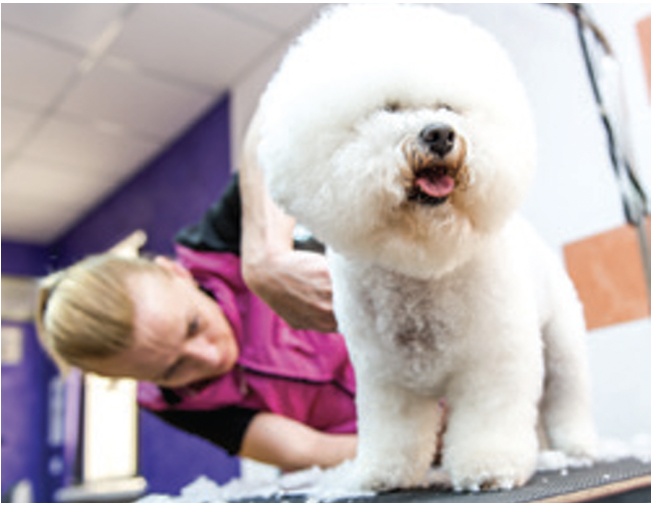
Round Table: Q and A
Round The Table Question: How does Parvo work and what can I do to prevent or treat it? Answered by: Dr. Aly Cohen Answer: Canine
If there has ever been a time that you noticed a fluffy, small white dog in old portraits with royal leaders from Spain, Italy, and France, chances are that dog was a Bichon Frise. This small fluffy dog has won over the hearts of many with their cheerful personality and beautiful white coat. However, the popularity of this breed has seemed to decrease because of the maintenance needed as we will discuss later in the article.
Looking back through history, we see that the Bichon Frise has had a rocky road throughout the years but was always able to land on its feet or should we say… paws. During this breed’s lifetime, they have been faced with challenges from wars to revolutions and come out to be one of the great survivors of the canine kingdom.
The Bichon Frise’s story is said to begin with a grouping of “little white dogs” as they would be called. Barbichon-type dogs was a larger term to cover these little white dogs but included Bolognese, Havanese, Maltese, and of course, Bichon Frise. This group came about on Tenerife, one of the largest Canary Islands. Over time, one of the dog breeds became closely associated with the island, so much so that people started referring to them as the Bichon Tenerife.
Between the personality and appealing look, Bichon Tenerife became the ancestor of the modern Bichon Frise we know today. Dating back to the 13th century, studies show this is the time when the bichon Frise started to have a close association with European nobles. The European leaders were crazy about these lapdogs and would sometimes act in odd ways because of their charmful wits.
It is said that there was a transportation trend that King Henry III of France himself started. He would carry a few During this revolution, the Bichon Frise’s caretakers were sent to prison leaving the royal dogs to fend for themselves on the streets. Luckily, street performers began taking in the little white lap dogs and then turned them into performers as well. They were trained to walk on their hind legs, do somersaults, wave their paws in the air, and perform several other tricks to bring in money from those who passed by. They seemed to have survived the hard times until the 20th century happened which brought on two world wars causing shortages and difficulties for everyone.

The Bichon Frise’s time with the circus came to an end but once again, they found themselves being saved by a newfound group of people in France and Belgium who brought them in and saved their life. By 1933, the breed was recognized in France as the “Bichon a Poil Frisé” meaning the “Bichon of the curly hair.”
In 1956 the bichon Frise was brought to America by Helene and Francois Picault who came from Dieppe, France. They wanted to try to establish the breed in this country in hopes to resume the existence and expansion of these dogs. For years to come, they found themselves successful in the breeding process of the Bichons which also led to them taking on breed traits such as size and facial expressions.
After this happened, the once royal lap dog was ready to take its place in the show ring. From 1964 to 1973 several things came to fruition for the Bichon Frise dog breed such as; the Bichon Frise Club of America was founded in San Diego, the AKC accepted them into the miscellaneous class, they went on to having a full breed recognition in the non-sporting group. The Bichon seemed to finally find a solid home in the show ring and have been competing and winning shows ever since.
One can simply take a quick look at any Bichon Frise and know instantly that they require routine grooming. They have a thick double coat with the undercoat being soft and dense while the topcoat is coarse and curly. It is best to take them to a professional groomer to get a full-service groom every 4 weeks. They will bathe them and trim their hair, nails, and the pads of their feet. At-home care should consist of a bath every 1 to 2 weeks and regular brushing 2 to 3 times per week.
Keep in mind, the bichon Frise should not be brushed when the coat is fully dry. You use a hydrating spray to lightly mist their coat before brushing. This breed is hypoallergenic meaning they don’t shed which makes grooming a bit easier and cuts down on the amount of brushing needed.
The Bichon Frise is one dog breed that was not bred to be a working dog. They were actually bred simply for human companionship. Although they did that job very well, there are times that the Bichon Frise has in fact been on the working end of things. As history proves they were once used to perform tricks and as circus show dogs to bring in money. Decades later they were taken in to be show dogs and still to this day are used as show dogs in the ring. It is safe to say that this breed takes the “human companionship” job very seriously. They have the charming look, a loving personality, and a strong desire to please their owner.


When it comes to a Bichon Frise being famous, we can conclude that the entire breed is famous in their own way. As a lone survivor breed that started on an island, moved into royalty, served as a performer, and now makes their way in the show ring, they have overcome challenges and defeated the odds over and over. However, if we are discussing each famous Bichon Frise the number one Bichon that has to be named is JR. In 2001 JR became the first best-show winner in the AKC/Eukanuba National Championship and his signature gesture at the end was a two pawed salute to the crowd.
Two months later he won best in the show at Westminster which led to him being the first Bichon to win a top prize in that area. JR was even bragged on by one of the judges stating that he was “as close to perfection as you can get.” The most recent Bichon Frise is named Flynn who also won a dog show competition at the Madison Square Garden for the Westminster Kennel Club. His name didn’t become famous simply because of the win but because the audience was shocked and did not expect him to come out as the winner. In 2018 judge BettyAnne Stenmark announced her decision on who the winner would be and at that moment, Flynn became America’s top dog.
Having any dog will require some form of exercise daily. Some dogs require a lot of exercise and some require very little and luckily the Bichon Frise falls into the latter. As they are small dogs and keep themselves fairly occupied, this breed only needs about 30 minutes to 1 hour of daily exercise. They can likely get plenty from running around the home, but it is best to take them on a walk or play fetch to give them more of the mental stimulation along with bonding time. This dog is perfect for a busy family that doesn’t have as much time to put into taking their dog on walks and things of that nature.
Although the Bichon Frise hasn’t always been in the show ring, they have had their fair share of shows for several decades now. They are always white, though sometimes they may have a hint of cream or apricot, but you can bet that if it’s a fullblooded Bichon Frise it will be white. Their white and fluffy coat make them the perfect show dog and they have proven this to be true several times as they become the winner and best dog to be chosen by the judges.
Their outer coat is curly and full which causes them to fluff out like a puffball when they are bathed and blown dry with a hair dryer. This makes for a great appearance when performing in front of the judges. Wrap It Up
All in all the Bichon Frise is the perfect family dog for those on the go with busy lives. They hardly shed and although they do require more grooming than usual, there isn’t much need for excessive daily activity. This breed has been around the world and lived several different lifestyles leading up to where they are in today’s time. One thing still holds true after all these years, the Bichon Frise has a fluffy and cute appearance that can pull on anyone’s heartstrings!

Round The Table Question: How does Parvo work and what can I do to prevent or treat it? Answered by: Dr. Aly Cohen Answer: Canine

Chris Malon from A-to-Z Vet Supply talks in depth about Fading Puppy Syndrome and Canine Herpes
Virus.

Today we sit down with Jonathan Lawler, also known as The Punk Rock Farmer, to talk about the documentary he’s producing called “Puppy Mill” This documentary is almost completed, and hopefully by the time this is printed, will be out there and available.